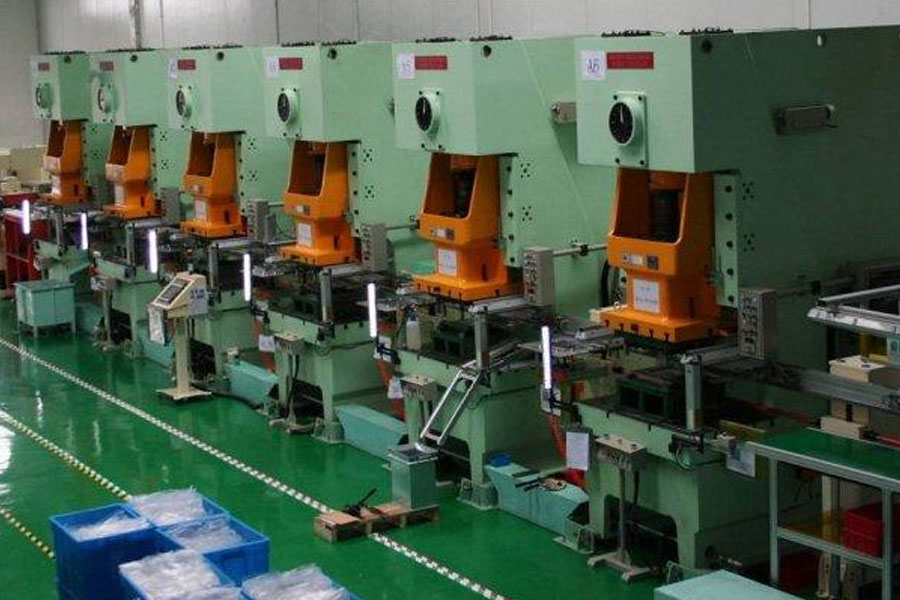Automated stamping production lines mainly include: progressive stamping, multi-station stamping, tandem stamping. Because of their respective characteristics, they are used to produce different automotive sheet metal parts. Their unique advantages play a huge role in automotive automation and high-efficiency production systems.
This article compares and analyzes the respective characteristics of the 3 stamping automated production lines, and explains the selection method of the production line based on their characteristics. Therefore, it is convenient for enterprises to combine the characteristics of their own parts and make reference in the selection of automatic production lines.
With the rapid development of the automotive industry, the four major automotive stamping industries have also flourished. In order to adapt to the ever-increasing output, various automated production lines came into being, and were given different production methods according to the characteristic requirements of individual products. Weifang enterprises choose different production methods according to their own product characteristics. The article classifies common stamping automation production lines: progressive die stamping, multi-station stamping, and tandem stamping, and briefly analyzes the characteristics and selection methods of each production line.
Selection Factors Of Stamping Automation Production Line
Generally consider the following factors to select the type of stamping production line.
- (1) Product material: Including material type, forming performance, hardness, etc., to measure the selection of coil or blank forming.
- (2) Material thickness: Consider the tonnage of the stamping machine tool and the matching form of the feeding mechanism in conjunction with the material.
- (3) Monthly supply and demand: Evaluate the production capacity, determine the production cycle, and weigh the types of automatic lines.
- (4) The volume of stamping products and the degree of difficulty of modeling: through modeling complexity and product quality requirements standards, comprehensive consideration of mold design methods and corresponding stamping automated production methods.
Common Types Of Stamping Automated Production lines
Progressive Die Stamping Production Line
(1) Overview:
The progressive die stamping automated production line is a production line that uses progressive die stamping, which is generally composed of an uncoiling feeder, a punching machine, a progressive die, and an automatic blanking line. Realize the automatic process of unwinding the coil, flattening the strip, oiling the strip, stamping into parts, and collecting finished parts off the line.
The important part: the progressive die, which is composed of multiple stations, up to more than 20 stations, each station is related in order to complete different processing content, generally in order for punching and repairing. Edge, flanging, shaping, blanking processes, etc. A series of different processing contents are completed in one stroke of the punching machine. After a stroke is completed, the feeder moves the material belt in the downward direction at a fixed step, so that multiple processes can be processed at the same time in a reciprocating punching cycle of the punching machine.
(2) Features:
The production cycle of the progressive die stamping automated production line is relatively high, generally up to 30 times/min or more.
- a. High production efficiency. Progressive die is a multi-task process die. In a pair of die, it can include various processes such as punching, bending and stretching, and has high productivity.
- b. Easy to automate. Automatic operation can be realized from loading, feeding, processing and loading, thereby reducing labor costs, improving production efficiency, and preventing abnormalities caused by inconsistencies in manual operations.
- c. It can be produced by high-speed punching machine. According to the product status, high-speed punch can be considered to achieve higher production efficiency.
- d. Safe operation. The progressive press equipment is equipped with safety doors, so that the work can improve the utilization rate of materials. The work area is separated from the personnel operation area to form a relatively closed work area, which provides a safety guarantee for high-speed production. Traditional tandem production lines can achieve higher production efficiency.
- e. Save the area of the production plant. A machine tool constitutes the processing part of a production line, which can complete the production of a product with a small footprint. It also simplifies the transportation state detection of the bottom material and semi-finished products, and has high safety.
- f. The material utilization rate is not high. In order to ensure the continuity of the material belt and various requirements, in order to ensure the stability of the feed, it is generally necessary to ensure the uniform distribution of the process content of each process state, and sometimes a part of the material is sacrificed, so that a high material utilization rate cannot be achieved.
Multi-Station Stamping Automated Production Line
(1) Overview:
A production line with multiple (usually 4 to 5 molds) independent station molds placed on the worktable of a large-tonnage press, using destackers or uncoiling feeders to load materials, and automatic feeding rods for process parts transfer. Automatic conveyor belt to collect off-line products,
(2) Features
- a. The bottom material can be a coil or a blank, which is flexible and helps to improve the utilization rate of the material.
- b. Using automatic rod feeding, the punching frequency is lower than the progressive die production line and higher than the traditional tandem production line, which can achieve higher production efficiency.
- c. It is possible to add loading and unloading sensors, double-material detection, gripping sensors, in-mold sensors, etc., to detect the position and status of the blanks and the parts in production, with high safety.
- d. There are high requirements for the feeding height and stamping direction of the molds at each station. In order to ensure the stability of the feeding, it is generally necessary to ensure that the state of each process is consistent.
Tandem Stamping Automated Production Line
(1) Overview:
Multiple presses are arranged in sequence and connected in series to form an automated production line. A pair of molds (that is, a process of the production process) is placed on the worktable of each press, and the automatic mechanical arm or robot completes the loading, process parts transfer, and unloading and packing work.
(2) Features
- a. It has a wide range of applications and can be applied to the production of various stamping parts. There is no high requirement for the size, shape and thickness of the stamping parts. It can be applied to the production of large-scale covering parts with great flexibility.
- b. The production efficiency is low. Due to the use of robotic arms to feed materials, the cycle time cannot be high. Compared with the progressive production line and the multi-station production line, the production efficiency is low.
- c. Conducive to mold maintenance and debugging, because each mold belongs to each press, the clamping is independent, and the working parameters are independent, and the maintenance and debugging of each mold process can be performed independently without affecting each other.
- d. It occupies a large area of the production plant. A traditional tandem production line generally includes 4 to 5 presses, which occupies a large area.
Selection And Application Of stamping Automation Production line
Progressive die stamping automated production line: In view of the process characteristics of its various processes distributed on a whole material belt and the higher achievable process strokes, it can be applied to the production of small parts on the car body, and can meet high requirements. Supply amount.
Multi-station stamping automatic production line: It can be used for the rapid production of medium-sized parts, beam parts that are not easily deformed, and symmetrical parts with more complicated left and right common mold shapes. The products that can be clamped by the gripper on the automatic rod are all It can be applied to the production of this automatic line.
Tandem stamping automated production line: Because its various processes are independently distributed in each press, the production line is the most flexible, suitable for large-scale covering parts with complex production processes, and is conducive to the debugging and independent production of a single process, and is convenient for high-demand products QC.
The selection of each stamping automated production line can be based on two trend directions: high output and high flexibility. For parts with large quantity demand, you can choose an automated production line with high efficiency and high output. If the parts are more complex and require high production technology, a flexible production line can be selected.
Automatic stamping production lines are used in major automobile factories with their own characteristics, providing a strong guarantee for the development of the automobile industry and the rapid growth of automobile production. The analysis and understanding of the stamping automation production line facilitates the selection of stamping parts production methods, and makes full use of the advantages of their respective automatic lines to serve the automotive field.

